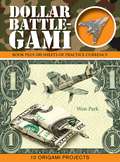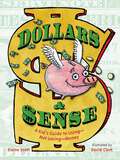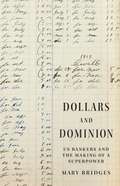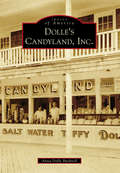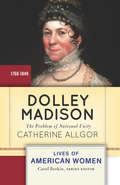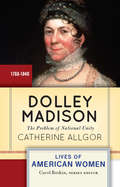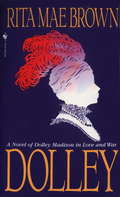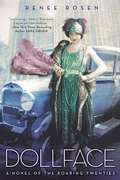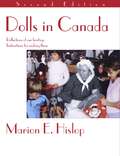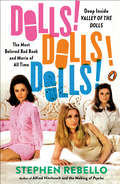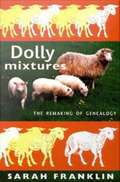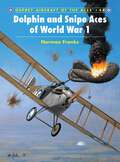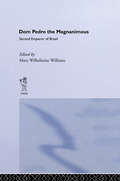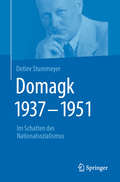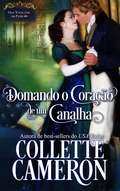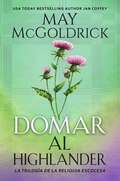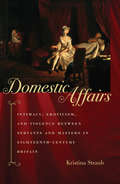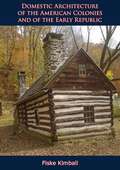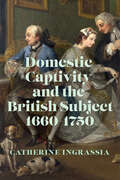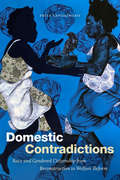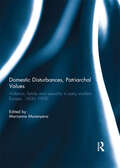- Table View
- List View
Dollar Battle-Gami (Origami Books)
by Won ParkGot a dollar burning a hole in your pocket? Impress your friends wherever you go with the readily available paper in your wallet. Or leave a creative tip for waiters and bartenders with these creative designs in Dollar Battle-Gami. Master paper engineer Won Park created this sophisticated origami kit for advanced paper artists. These 15 impressive projects turn a dollar bill (or a sheet of the included practice paper) into a combat knife, spy plane, hand grenade, revolver, tank, stealth bomber, stealth fighter, submarine, jet fighter, U.S. Navy destroyer, assault rifle, unmanned aerial drone, sniper rifle, land mine, or a Japanese zero fighter plane. Dollar Battle-Gami offers the next generation of origami enthusiasts a chance to gain a whole new perspective on battle tools and the world of origami.
Dollars & Sense: A Kid's Guide to Using--Not Losing--Money
by Elaine ScottWe&’re in the money! Many things come with instructions. Unfortunately, money isn&’t one of them. Most people learn how to use it—or lose it—by trial and error. Dollars & Sense is a basic operating instruction manual for money that will teach readers about the history of money, the way our American economy works, and how to make important decisions about personal finance. From skulls, sheep, and shells as barter in ancient civilizations to credit, interest, and collateral of our modern day economics, money—and all its glorious uses and cantankerous troubles—is explained in this concise and entertaining volume. Learn about how to make money, how to budget your money, how the government manages (or mismanages!) money, and how to be rich without even trying. Money is sometimes your friend and sometimes your enemy, but in this day and age, we all have to learn to get along with it. An engaging and approachable guide for kids tackling how to responsibly manage their money. Included are sidebars, time lines, diagrams, a glossary, and further resources, as well as information on related topics such as the Great Recession and sequestration.
Dollars and Dominion: US Bankers and the Making of a Superpower
by Professor Mary BridgesHow the creation of a new banking infrastructure in the early twentieth century established the United States as a global financial powerThe dominance of US multinational businesses today can seem at first like an inevitable byproduct of the nation&’s superpower status. In Dollars and Dominion, Mary Bridges tells a different origin story. She explores the ramshackle beginnings of US financial power overseas, showing that US bankers in the early twentieth century depended on the US government, European know-how, and last-minute improvisation to sustain their work abroad. Bridges focuses on an underappreciated piece of the nation&’s financial infrastructure—the overseas branch bank—as a brick-and-mortar foundation for expanding US commercial influence.Bridges explores how bankers sorted their new communities into &“us&”—potential clients—and &“them&”—local populations, who often existed on the periphery of the banking world. She argues that US bankers mapped their new communities by creating foreign credit information—and by using a financial asset newly enabled by the Federal Reserve System, the bankers&’ acceptance, in the process. In doing so, they constructed a new architecture of US trade finance that relied on long-standing inequalities and hierarchies of privilege. Thus, racialized, class-based, and gendered ideas became baked into the financial infrastructure.Contrary to conventional wisdom, there was nothing inevitable or natural about the rise of US finance capitalism. Bridges shows that US foreign banking was a bootstrapped project that began as a side hustle of Gilded Age tycoons and sustained itself by relying on the power of the US state, copying the example of British foreign bankers, and building alliances with local elites. In this way, US bankers constructed a flexible and durable new infrastructure to support the nation&’s growing global power.
Dolle's Candyland, Inc. (Images of America)
by Anna Dolle BushnellDolle's Candyland, Inc., has been an institution to beachgoers of the Eastern Shore since 1910. Behind every piece of saltwater taffy, kernel of caramel popcorn, and other delectable sweet produced by Dolle's is a rich history with ties to other well-known Eastern Shore establishments. Family-owned and -operated since 1910, Dolle's unique history of candy manufacturing makes for an interesting tradition still carried on today. With locations in Ocean City, Maryland, and Rehoboth Beach, Delaware, millions of beachgoers have enjoyed Dolle's by indulging in the homemade sweets or simply enjoying the business's timeless presence on the boardwalks of two popular seashore destinations.
Dolley Madison
by Catherine AllgorFirst Lady of the United States and America's "Queen of Hearts," Dolley Madison fashioned an unofficial role for herself in the new administration of the United States, helping to answer the nation's need for ceremony and leaving footprints for centuries of presidential wives to follow. Assisting her husband, James Madison, she helped to promote national unity, modeling a political behavior that stressed civility and empathy. Together, their approach fueled bipartisanship in a country still assembling a political identity. About the Lives of American Women series: Selected and edited by renowned women’s historian Carol Berkin, these brief biographies are designed for use in undergraduate courses. Rather than a comprehensive approach, each biography focuses instead on a particular aspect of a women’s life that is emblematic of her time, or which made her a pivotal figure in the era. The emphasis is on a "good read," featuring accessible writing and compelling narratives, without sacrificing sound scholarship and academic integrity. Primary sources at the end of each biography reveal the subject’s perspective in her own words. Study questions and an annotated bibliography support the student reader.
Dolley Madison Saves George Washington
by Don BrownDolley was a farm girl who became a fine first lady when she married James Madison. She wore beautiful dresses, decorated her home, and threw lavish parties. Everyone talked about Dolley, and everyone loved her, too. Then war arrived at her doorstep, and Dolley had to meet challenges greater than she’d ever known. So Dolley did one thing she thought might make a difference: she saved George Washington. Not the man himself, but a portrait of him, which would surely have been destroyed by English soldiers. Don Brown once again deftly tells a little known story about a woman who made a significant contribution to American history.
Dolley Madison: The Problem of National Unity (Jeffersonian America Ser.)
by Catherine AllgorFirst Lady of the United States and America's "Queen of Hearts," Dolley Madison fashioned an unofficial role for herself in the new administration of the United States, helping to answer the nation's need for ceremony and leaving footprints for centuries of presidential wives to follow. Assisting her husband, James Madison, she helped to promote national unity, modeling a political behavior that stressed civility and empathy. Together, their approach fueled bipartisanship in a country still assembling a political identity.About the Lives of American Women series:Selected and edited by renowned women's historian Carol Berkin, these brief biographies are designed for use in undergraduate courses. Rather than a comprehensive approach, each biography focuses instead on a particular aspect of a women's life that is emblematic of her time, or which made her a pivotal figure in the era. The emphasis is on a "good read," featuring accessible writing and compelling narratives, without sacrificing sound scholarship and academic integrity. Primary sources at the end of each biography reveal the subject's perspective in her own words. Study questions and an annotated bibliography support the student reader.
Dolley: A Novel
by Rita Mae BrownShe had the president's ear and the nation's heart.She's the wife of the fourth president of the United States; a spirited charmer who adores parties, the latest French fashions, and the tender, brilliant man who is her husband. But while many love her, few suspect how complex Dolley Madison really is.Only in the pages of her diary--as imagined by novelist Rita Mae Brown--can Dolley fully reveal herself. And there we discover the real first lady--impulsive, courageous, and wise--as she faces her harshest trial: in 1814, the United States is once more at war with mighty Britain, and her beloved James is the most hated man in America.From the White House receptions she gaily presides over to her wild escape from a Washington under siege, Dolley gives us a legend ,made warmly human. For there has never been a first lady so testedèor one who came through the fire so brilliantly.From the Paperback edition.
Dollface: A novel of the Roaring Twenties
by Renée RosenAmerica in the 1920s was a country alive with the wild fun of jazz, speakeasies, and a new kind of woman--the flapper. Vera Abramowitz is determined to leave her gritty childhood behind and live a more exciting life, one that her mother never dreamed of. Bobbing her hair and showing her knees, the lipsticked beauty dazzles, doing the Charleston in nightclubs and earning the nickname "Dollface." As the ultimate flapper, Vera captures the attention of two high rollers, a handsome nightclub owner and a sexy gambler. On their arms, she gains entrée into a world filled with bootleg bourbon, wailing jazz, and money to burn. She thinks her biggest problem is choosing between them until the truth comes out. Her two lovers are really mobsters from rival gangs during Chicago's infamous Beer Wars, a battle Al Capone refuses to lose. The heady life she's living is an illusion resting on a bedrock of crime and violence unlike anything the country has ever seen before. When the good times come to an end, Vera becomes entangled in everything from bootlegging to murder. And as men from both gangs fall around her, Vera must put together the pieces of her shattered life, as Chicago hurtles toward one of the most infamous days in its history, the St. Valentine's Day Massacre. READERS GUIDE INCLUDED
Dollmaker (The St-Cyr and Kohler Mysteries #6)
by J. Robert JanesA high-ranking German sailor is accused of petty, brutal murderAs Allied bombers rain death on the German submarine pens of occupied France, police inspectors Jean-Louis St-Cyr and Hermann Kohler stumble through the darkness to a crime scene. A shopkeeper lies dead, head bashed in with a railway tie, surrounded by fragments of a shattered porcelain doll. It appears to be an open-and-shut case, which would make the detectives&’ job simple if the obvious suspect weren&’t a decorated U-Boat commander. Feared by the British, beloved by his crew, Kapitän Kaestner is a killer with a hobby: the manufacture of high-quality dolls. Before World War I ruined their business, generations of Kaestners produced the finest dolls on the continent. The shopkeeper&’s death comes not long after he and Kaestner fail to revive the dollmaking trade. Now, shrouded by a blackout, St-Cyr and Kohler begin the unenviable task of pinning a murder on the pride of the German fleet.
Dolls In Canada
by Marion E. HislopDolls in Canada is two books in one. The first section is a personal and engaging look at dolls which make up our heritage; pioneer dolls, native people’s dolls, dolls from various cultural groups in Canada, dolls from legends and stories, dolls in different styles and materials, and dolls by Canadian artists. Part two contains easy-to-follow instructions on how to make over fifteen different types of dolls, from rag dolls to jumping jacks, from hanky panky dolls to clothespeg dolls.
Dolls! Dolls! Dolls!: Deep Inside Valley of the Dolls, the Most Beloved Bad Book and Movie of All Time
by Stephen Rebello"A blissful treasure trove of gossipy insider details that Dolls fans will swiftly devour."--Kirkus ReviewsThe unbelievable-but-true, inside story of Jacqueline Susann's pop culture icon Valley of the Dolls--the landmark novel and publishing phenomenon, the infamous smash hit film ("the best worst movie ever made"), and Dolls's thriving legacy todaySince its publication in 1966, Jacqueline Susann's Valley of the Dolls has reigned as one of the most influential and beloved pieces of commercial fiction. Selling over thirty-one million copies worldwide, it revolutionized overnight the way books got sold, thanks to the tireless and canny self-promoting Susann. It also generated endless speculation about the author's real-life models for its larger-than-life characters. Turned in 1967 into an international box-office sensation and morphing into a much-beloved cult film, its influence endures today in everything from films and TV shows to fashion and cosmetics tributes and tie-ins. Susann's compulsive readable exposé of three female friends finding success in New York City and Hollywood was a scandalous eye-opener for its candid treatment of sex, naked ambition, ageism, and pill-popping, and the big screen version was one of the most-seen and talked-about movies of the time.Dolls! Dolls! Dolls! digs deep into the creation of that hugely successful film--a journey nearly as cut-throat, sexually-charged, tragic, and revelatory as Susann's novel itself--and uncovers how the movie has become a cherished, widely imitated camp classic, thanks to its over-the-top performances, endlessly quotable absurd dialogue, outré costumes and hairdos, despite the high aspirations, money, and talent lavished on it. Screenwriter-journalist-film historian Stephen Rebello has conducted archival research and new interviews to draw back the velvet curtain on the behind-the-scenes intrigue, feuds and machinations that marked the film's production. In doing so, he unveils a rich, detailed history of fast-changing, late 1960s Hollywood, on screen and off.
Dolly Mixtures: The Remaking of Genealogy
by Sarah FranklinWhile the creation of Dolly the sheep, the world's most famous clone, triggered an enormous amount of discussion about human cloning, in Dolly Mixtures the anthropologist Sarah Franklin looks beyond that much-rehearsed controversy to some of the other reasons why the iconic animal's birth and death were significant. Building on the work of historians and anthropologists, Franklin reveals Dolly as the embodiment of agricultural, scientific, social, and commercial histories which are, in turn, bound up with national and imperial aspirations. Dolly was the offspring of a long tradition of animal domestication, as well as the more recent histories of capital accumulation through selective breeding, and enhanced national competitiveness through the control of biocapital. Franklin traces Dolly's connections to Britain's centuries-old sheep and wool markets (which were vital to the nation's industrial revolution) and to Britain's export of animals to its colonies--particularly Australia--to expand markets and produce wealth. Moving forward in time, she explains the celebrity sheep's links to the embryonic cell lines and global bioscientific innovation of the late twentieth century and early twenty-first. Franklin combines wide-ranging sources--from historical accounts of sheep-breeding, to scientific representations of cloning by nuclear transfer, to popular media reports of Dolly's creation and birth--as she draws on gender and kinship theory as well as postcolonial and science studies. She argues that there is an urgent need for more nuanced responses to the complex intersections between the social and the biological, intersections which are literally reshaping reproduction and genealogy. In Dolly Mixtures, Franklin uses the renowned sheep as an opportunity to begin developing a critical language to identify and evaluate the reproductive possibilities that post-Dolly biology now faces, and to look back at some of the important historical formations that enabled and prefigured Dolly's creation.
Dolly's Creek: An Archaeology of a Victorian Goldfields Community
by Susan LawrenceBetween 1990 and 1992, a group of archaeologists mapped the remains of the settlement on the Moorabool and excavated four houses there. Like the miners, they were drawn to the site by the desire to dig for treasure. In Dolly's Creek, Susan Lawrence tells the story both of their archaeological research and of the community they uncovered. Dolly's Creek uses landscape, material objects and documents to gain an understanding of the nature of the diggings community and of the ways in which it changed as the gold rush passed. Susan Lawrence's imaginative, exploratory approach invites us to engage in the clue-finding, jigsaw-like quality of the archaeological hunt. This is a beautifully written book—historical ethnography at its best.
Dolphin and Snipe Aces of World War 1
by Norman Franks Harry DempseyThis book focuses on the combat careers of the last of the famous Sopwith fighters to enter service during World War 1, the Dolphin and the Snipe, both of which were built on the strong scouting heritage of the Pup and Camel. The Dolphin featured the unique negative-staggered biplane wing arrangement, which provided the pilot with the best possible tactical view forward for seeking out his enemy. Used extensively on the Western Front, the Dolphin proved very effective in combat, with a substantial number of British aces scoring kills with the fighter. The Snipe was built as the successor of the highly successful Camel, and entered service with the fledgling Royal Air Force in the summer of 1918. Although seeing just a few months of action before the Armistice, the Snipe nevertheless proved its superiority over virtually all other fighters.
Dom Pedro the Magnanimous, Second Emperor of Brazil: Second Emperor Of Brazil
by Mary Wilhelmine WilliamsFirst published in 1967
Domagk 1937-1951: Im Schatten des Nationalsozialismus
by Detlev StummeyerDomagk ist bisher als Forscher beschrieben, der völlig unbeeinflusst vom Nationalsozialismus geblieben ist. Dies war nur möglich, indem die Zeit des Nationalsozialismus ausgeblendet wurde. Darunter fallen auch seine Verdienste als Tuberkuloseforscher; nur unvollständig sind sie nach dem Krieg rezipiert worden. Sie hätten Domagks Eingebundenheit in das NS-System offenbart. Diese bleibt deshalb so unbekannt, weil seine Gestapo-Haftzeit ihn immun gegen kritisches Nachfragen machte. Auf Anordnung Hitlers wurde er im Zuge der Nobelpreisehrung für dreieinhalb Tage inhaftiert, was entgegen vorliegender Dokumente als Beweis seiner oppositionellen Haltung interpretiert wird. Seine von ihm Anfang der 1960er Jahre verfassten Lebenserinnerungen, in denen er sich durchaus als Hitlersympathisant zu erkennen gibt, werden ab 1990 zu einem authentischen Tagebuch umgedeutet, mit dessen Hilfe Domagks angeblich kritische Haltung im 3. Reich bewiesen werden soll. Ebenso kommt das Schicksal seines frühen Mitstreiters Paul Bosse und dessen Sulfonamidbuch von 1943 zur Sprache. Beide, Domagk und Bosse, setzten sich schon früh für die Behandlung von Kriegswunden mit Sulfonamiden ein.
Domando o Coração de um Canalha (Série “Uma Valsa com um Patife”, Livro IV #4)
by Collette CameronSeu noivo a traiu. Ele acreditava ser ilegítimo. Poderão os dois abandonar tudo um pelo outro? Katrina Needham pretendia se casar com seu amado major e viver feliz para sempre — até que ele é visto com outra mulher. Abalada e precisando de uma distração, ela concorda em ajudar o rude e perigosamente atraente capitão Dominic St. Monté a encontrar uma esposa. Então, por que ela se vê acalentando ideias românticas sobre o corsário que se transformou em um duque? Quando Nic inesperadamente herda um ducado e os cuidados de suas irmãs mais novas, ele decide relutantemente que deve se casar. Mais tarde, se sua nova duquesa estiver disposta, ele espera voltar para a vida de navegante que tanto deseja em tempo parcial. Se ela não concordar, ele não terá escolha a não ser desistir do mar para sempre. Nic logo percebe que Katrina possui todas as características que ele procura em uma duquesa. Quanto mais tempo ele passa junto à bela e vivaz jovem, mais apaixonado ele fica. Ainda assim, não pode pedir a mão dela em casamento. Além de ser oficialmente comprometida com outra pessoa, ela não tem nenhum interesse em se tornar uma duquesa, muito menos a esposa de um corsário. Poderão Nic e Katrina renunciar aos seus futuros cuidadosamente planejados e confiar no amor para guiá-los?
Domar al Highlander: La Trilogía de la Reliquia Escocesa (La Trilogía de la Reliquia Escocesa)
by Jan Coffey May McGoldrickFINALISTA DEL PREMIO RITA FINALISTA DEL PREMIO HOJA DE ORO DE LA NJRW ¡UN NUEVO GIRO AL CUENTO CLÁSICO DE LA BELLA Y LA BESTIA! Innes Munro tiene la capacidad de "leer" el pasado de una persona con sólo tocarla, pero su don conlleva un alto precio. Obligada a permanecer en el desolado castillo de Girnigoe, jamás imaginó sentirse atraída por el guerrero herido que vaga por sus sombríos pasadizos. Conall Sinclair, Conde de Caithness, carga con las cicatrices de las batallas libradas contra los ingleses y con las marcas de los latigazos sufridos en sus mazmorras, pero son las heridas que lleva en el alma las que le causan un dolor aún más profundo. Aislado de su clan y del mundo entero, vive recluido en una torre alzada sobre la salvaje costa escocesa, decidido a no permitir que la fogosa Innes se acerque a él. A medida que la pasión entre ellos crece, Innes empieza a temer que su don sea una maldición. ¿Podrá Conall amar alguna vez a una mujer capaz de leer sus secretos más oscuros y sentir el dolor que esconde? ¿Y puede el amor vencer todos los temores? Cuando fuerzas peligrosas comienzan a cercarlos, deberán forjar un lazo de confianza que los salve a ambos... o perderse el uno al otro para siempre.
Domare l'Highlander (Trilogia delle Reliquie Scozzesi)
by Jan Coffey May McGoldrickTrilogia delle Reliquie Scozzesi – Libro 2 FINALISTA DEL PREMIO RITA© FINALISTA DEL PREMIO "FOGLIA D'ORO" DELLA NJRW UNA NUOVA VERSIONE DELLA CLASSICA FAVOLA DELLA BELLA E DELLA BESTIA! Innes Munro ha la capacità di "leggere" il passato di una persona semplicemente toccandola, ma il suo dono ha un prezzo molto alto. Costretta a soggiornare nel desolato castello di Girnigoe, Innes non si aspetta di essere attratta dal guerriero ferito che infesta i suoi oscuri passaggi. Conall Sinclair, conte di Caithness, porta con sé le cicatrici delle battaglie con gli inglesi e i segni delle sferzate delle loro prigioni, ma le ferite che gli si sono aperte dentro lo fanno soffrire ancora di più. Isolato dal suo clan e dal resto del mondo in una torre arroccata sulla selvaggia costa scozzese, Conall è riluttante a lasciarsi avvicinare dalla vivace Innes. Mentre la loro passione cresce, Innes teme che il suo dono sia una maledizione. Conall potrà mai amare una donna in grado di leggere i suoi segreti più oscuri e di sentire il dolore che nasconde... e l'amore può domare tutte le paure? Mentre forze pericolose si avvicinano, i due devono creare un legame di fiducia che li salverà entrambi... o si perderanno per sempre.
Domestic Affairs: Intimacy, Eroticism, and Violence between Servants and Masters in Eighteenth-Century Britain
by Kristina StraubFrom Daniel Defoe’s Family Instructor to William Godwin’s political novel Caleb Williams, literature written for and about servants tells a hitherto untold story about the development of sexual and gender ideologies in the early modern period. This original study explores the complicated relationships between domestic servants and their masters through close readings of such literary and nonliterary eighteenth-century texts. The early modern family was not biologically defined. It included domestic servants who often had strong emotional and intimate ties to their masters and mistresses. Kristina Straub argues that many modern assumptions about sexuality and gender identity have their roots in these affective relationships of the eighteenth-century family. By analyzing a range of popular and literary works—from plays and novels to newspapers and conduct manuals—Straub uncovers the economic, social, and erotic dynamics that influenced the development of these modern identities and ideologies.Highlighting themes important in eighteenth-century studies—gender and sexuality; class, labor, and markets; family relationships; and violence—Straub explores how the common aspects of human experience often intersected within the domestic sphere of master and servant. In examining the interpersonal relationships between the different classes, she offers new ways in which to understand sexuality and gender in the eighteenth century.
Domestic Architecture of the American Colonies and of the Early Republic
by Fiske Kimball Metropolitan Museum of Art New YorkIn this book, lectures delivered at the Metropolitan Museum during February and March, 1920, have been elaborated in an effort to present a comprehensive and accurate view of the evolution of the early American houseSidney Fiske Kimball (1888 – 1955) was an American architect, architectural historian and museum director. A pioneer in the field of architectural preservation in the United States, he played a leading part in the restoration of Monticello and Stratford Hall Plantation in Virginia.Over his nearly-30-year tenure as director of the Philadelphia Museum of Art, he moved the museum into its current building and greatly expanded its collections.
Domestic Captivity and the British Subject, 1660–1750
by Catherine IngrassiaIn seventeenth- and eighteenth-century Britain, captivity emerged as a persistent metaphor as well as a material reality. The exercise of power on both an institutional and a personal level created conditions in which those least empowered, particularly women, perceived themselves to be captive subjects. This "domestic captivity" was inextricably connected to England’s systematic enslavement of kidnapped Africans and the wealth accumulation realized from those actions, even as early fictional narratives suppressed or ignored the experience of the enslaved. Domestic Captivity and the British Subject, 1660–1750 explores how captivity informed identity, actions, and human relationships for white British subjects as represented in fictional texts by British authors from the period.This work complicates interpretations of canonical authors such as Aphra Behn, Richard Steele, and Eliza Haywood and asserts the importance of authors such as Penelope Aubin and Edward Kimber. Drawing on the popular press, unpublished personal correspondence, and archival documents, Catherine Ingrassia provides a rich cultural description that situates literary texts from a range of genres within the material world of captivity. Ultimately, the book calls for a reevaluation of how literary texts that code a heretofore undiscussed connection to the slave trade or other types of captivity are understood.
Domestic Contradictions: Race and Gendered Citizenship from Reconstruction to Welfare Reform
by Priya KandaswamyIn Domestic Contradictions, Priya Kandaswamy analyzes how race, class, gender, and sexuality shaped welfare practices in the United States alongside the conflicting demands that this system imposed upon Black women. She turns to an often-neglected moment in welfare history, the advent of the Freedmen's Bureau during Reconstruction, and highlights important parallels with welfare reform in the late twentieth century. Kandaswamy demonstrates continuity between the figures of the “vagrant” and “welfare queen” in these time periods, both of which targeted Black women. These constructs upheld gendered constructions of domesticity while defining Black women's citizenship in terms of an obligation to work rather than a right to public resources. Pushing back against this history, Kandaswamy illustrates how the Black female body came to represent a series of interconnected dangers—to white citizenship, heteropatriarchy, and capitalist ideals of productivity —and how a desire to curb these threats drove state policy. In challenging dominant feminist historiographies, Kandaswamy builds on Black feminist and queer of color critiques to situate the gendered afterlife of slavery as central to the historical development of the welfare state.
Domestic Disturbances, Patriarchal Values: Violence, Family and Sexuality in Early Modern Europe, 1600-1900
by Marianna MuravyevaThis book offers an in-depth analysis of several national case studies on family violence between the sixteenth and nineteenth centuries, using court records as their main source. It raises important questions for research on early modern Europe: the notion of absolute power; sovereignty and its applicability to familial power; the problem of violence and the possibility of its usage for conflict resolution both in public and private spaces; and the interconnection of gender and violence against women, reconsidered in the context of modern state formation as a public sphere and family building as a private sphere. Contributors bring together detailed studies of domestic violence and spousal murder in Romania, England, and Russia, abduction and forced marriage in Poland, infanticide and violence against parents in Finland, and rape and violence against women in Germany. These case studies serve as the basis for a comparative analysis of forms, models, and patterns of violence within the family in the context of debates on political power, absolutism, and violence. They highlight changes towards unlimited violence by family patriarchs in European countries, in the context of the changing relationship between the state and its citizens. This book was originally published as a special issue of the Journal of the History of the Family.
